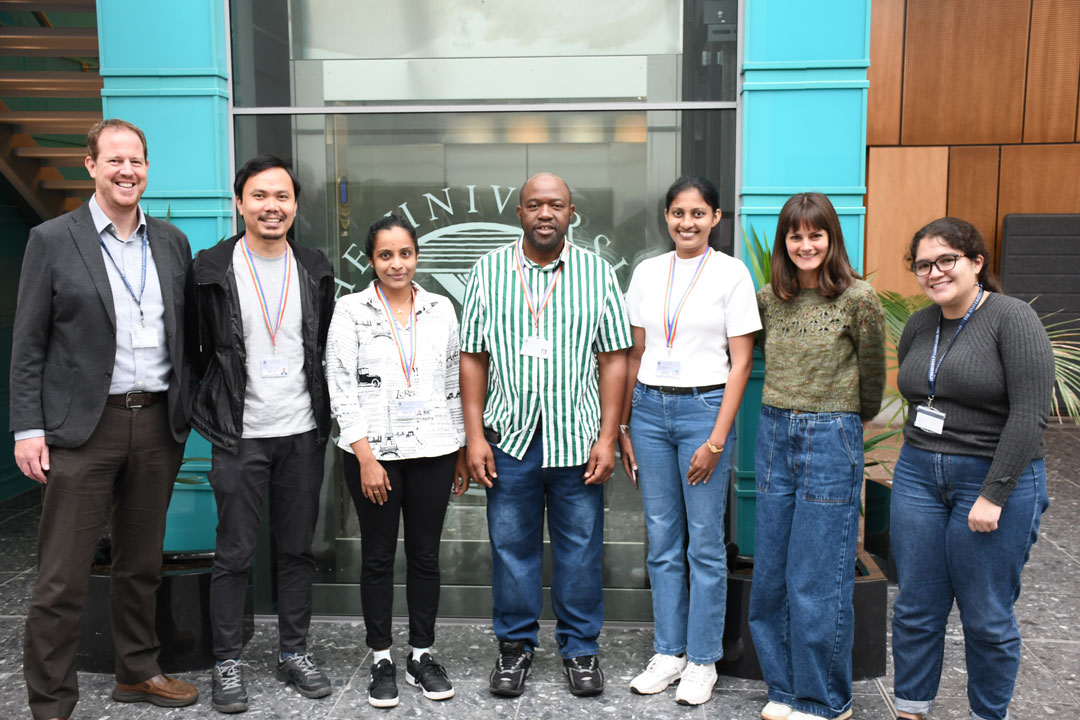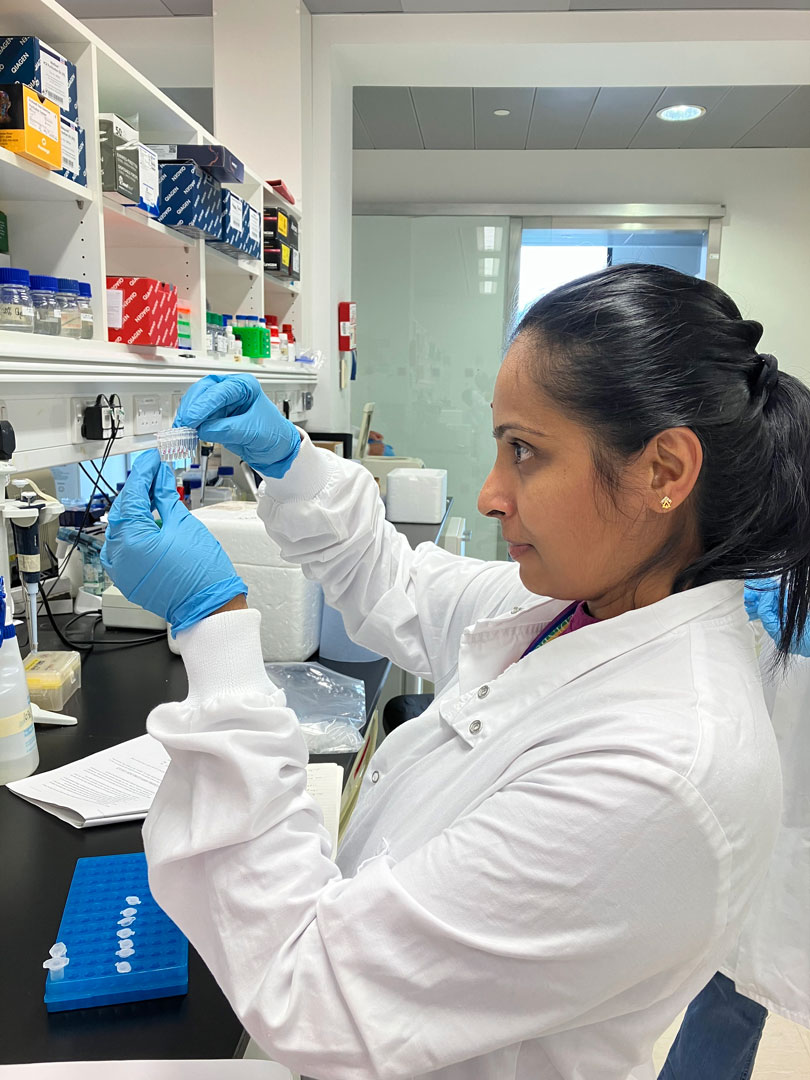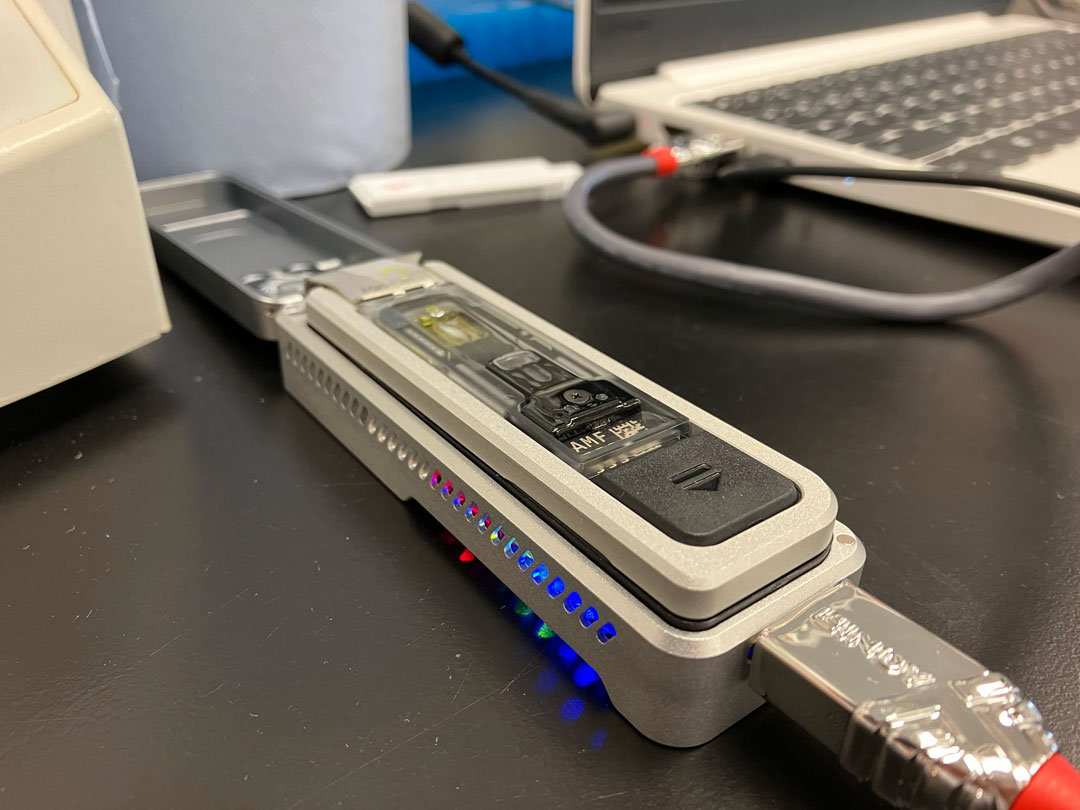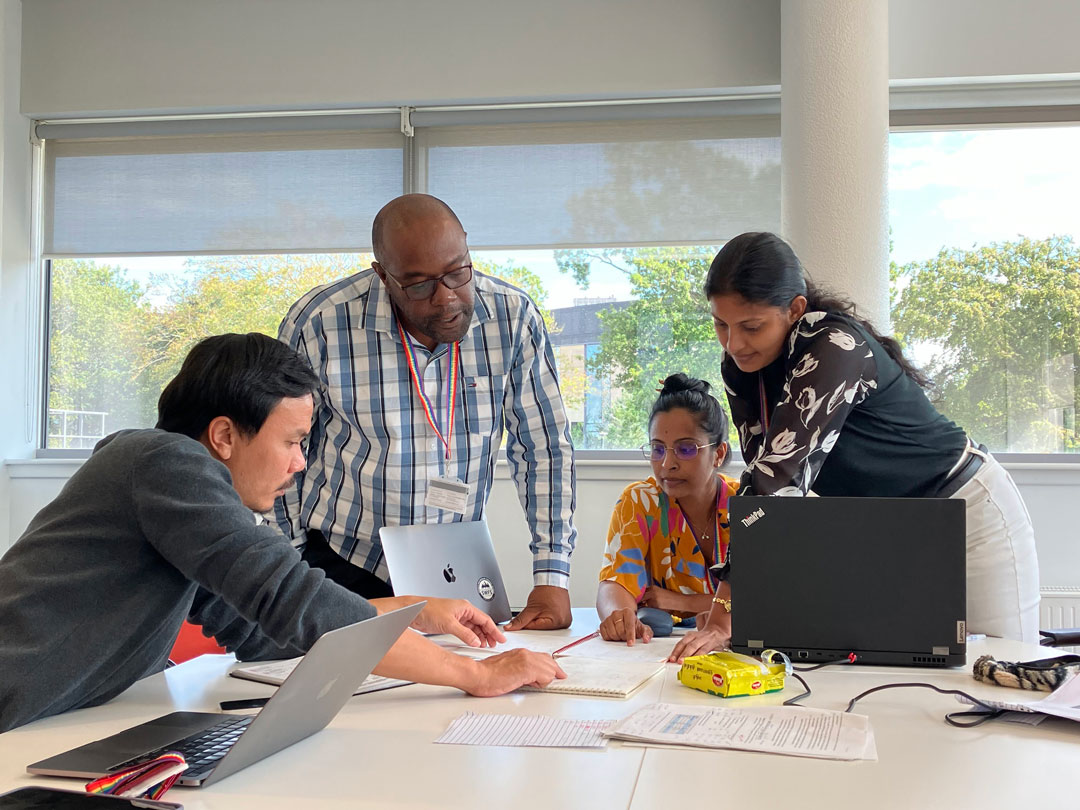Miniature methods for a monumental task
Monitoring the elasmobranch trade is crucial but not always possible using observational data alone. Our ability to visually assign species to a bag full of fins might be getting better, but the emergence of markets for “non-fin” products like meat and oil presents new challenges. Sometimes you need to dive deeper. Sometimes you need DNA.

Workshop participants and instructors, from left to right: Professor Rob Ogden (University of Edinburgh), Frankie Sitam (Malaysian National Wildlife Forensics Laboratory), Dr Gayashani Sandamalika (Wayamba University of Sri Lanka), Frank Banda (Zambian Central Veterinary Research Institute), Pagoda Arachchige Dona Lanikika Anjani (Blue Resources Trust, Sri Lanka), Dr Emily Humble (University of Edinburgh), Ana Martinez Lopez (University of Edinburgh). Photo © Dr Emily Humble
But there is one big problem. So many of the world’s shark fishing nations have little infrastructure for doing genetic analysis. This is because, for a long time, DNA sequencing has relied on big pieces of equipment that are expensive to source and expensive to run. This is now changing. With the development of a hand-held and portable machine called the MinION, it is now possible to sequence DNA in practically any location in a very short period.

Dr Gayashani Sandamalika inspecting PCR products in the lab.
One country that desires to incorporate genetic testing into the routine monitoring of shark and ray fisheries is Sri Lanka. So, with support from the Save Our Seas Foundation and the Shark Conservation Fund, we set out to make this happen, starting with a MinION sequencing workshop at the University of Edinburgh in the UK. We invited two scientists from our Sri Lankan partners, Blue Resources Trust and Wayamba University. Wildlife forensic practitioners from Zambia and Malaysia joined them. Two weeks were carefully planned and expertly taught so that our participants could confidently go from sample to species identification using reagents and the cutting-edge equipment they could access back home. These steps involved the fiddly and, at times, the nerve-wracking procedure of ‘loading the MinION,’ to learning how to decipher the output using bioinformatic pipelines. We also squeezed in a trip to the cold, windy, but wonderful Scottish coastline.

Oxford Nanopore Technologies MinION sequencing device.
Fast-forward a couple of months, and Blue Resources Trust is now well on its way to transforming a once-empty room at their remote field station into a fully-fledged genetics laboratory. This week, Master’s student and workshop participant Lankika Anjani has been carrying out DNA extractions and is getting the MinION ready for its maiden sequencing run. Before too long, Blue Resources Trust will be in a position to respond to requests from customs and fisheries departments for DNA analysis, will start tackling tricky samples like meat and oil, and will hopefully serve as a leading example of how valuable democratising biodiversity genomics can be.

Workshop participants troubleshooting the bioinformatics pipeline.
Sourcing reagents and equipment for such a remote location has, at times, felt like a monumental task, and we will no doubt face challenges ahead. However, with shark populations plummeting worldwide, for a remote research station to have the capacity to perform in-country DNA-based fisheries monitoring is something of a monumental achievement.
